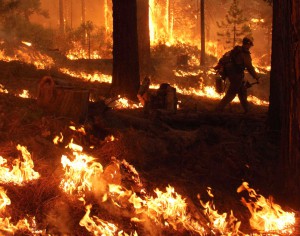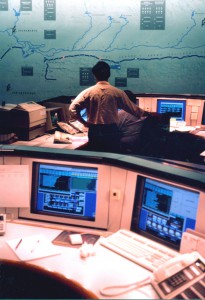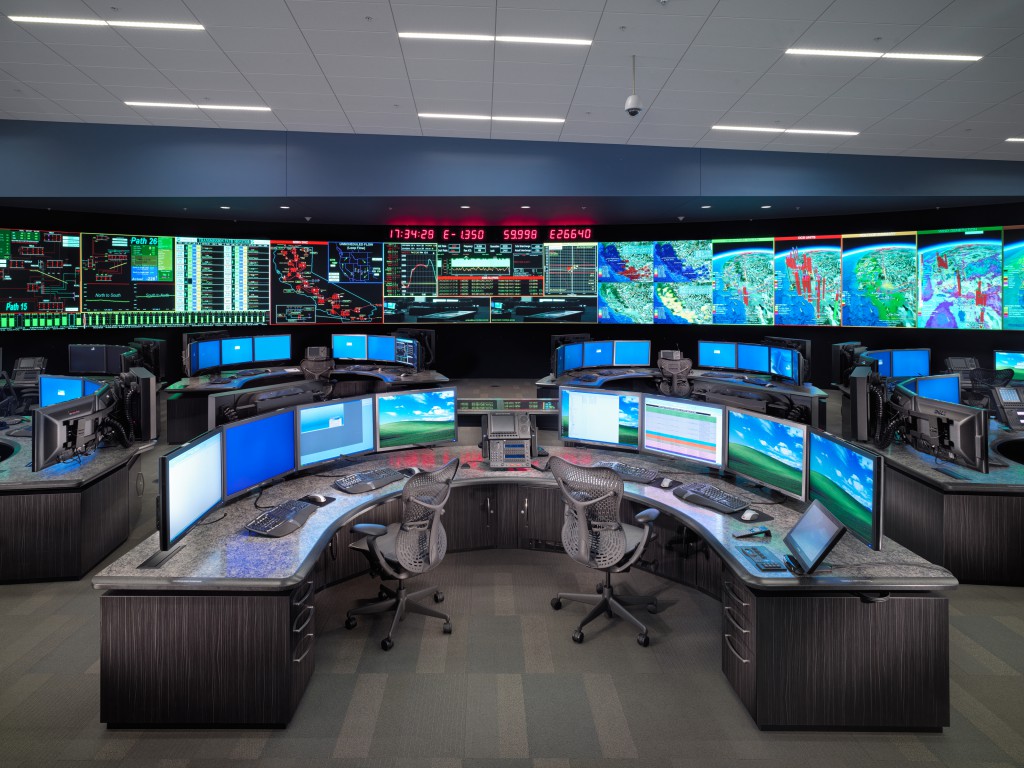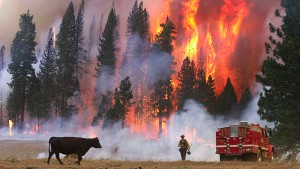Mission Critical Facilities – Design as if Lives depend upon it.
Peter Saucerman
November 7, 2013

Fall is historically the peak wildfire season in California. The 2013 season started earlier, lasted longer and produced larger, more destructive events – like the Rim Fire. What started with a wisp of smoke on the horizon quickly turned into an out of control rampage. The Rim Fire started on August 17th, 2013 along the Clavey River (a pristine tributary to the Tuolumne) and is the 3rd largest wildfire in California history. The fire charred over 257,000 acres including homes and businesses, land in Yosemite National Park, precious old growth forest, wildlife habitat and river canyons. 97% of the fire burned through the Tuolumne River watershed and included 40 miles of the Wild & Scenic Tuolumne River corridor.
Mission Critical facilities play a central role in coordinating responses to wildfires. In the Rim Fire, three different Mission Critical Centers – each designed by Dreyfuss + Blackford – were called into strategic action.
The Governor’s Office of Emergency Services – Cal OES – led the firefighting response, coordinating 3700 firefighters, 460 apparatus, 60 bulldozers and 15 helicopters. OES directs Operations from their Emergency Operating Center (EOC) in Rancho Cordova.
As the fire threatened Hetch-Hetchy reservoir, the Department of Water Resources – DWR – shut off two of three hydroelectric turbines as a precaution. These turbines generate nearly 80% of San Francisco’s electricity. DWR manages the State Water Plan from their Project Operations Center (POC) in Sacramento.
The California Independent System Operator – CaISO – responded by re-routing electrical transmission to balance the system and maintain continuity of delivery for the California Electric Grid. Cal ISO operates the State’s transmission grid from their Operations Center in Folsom.
Each of these actions had significant operational impacts, requiring full coordination across multiple agencies – Federal and State, Regional and Municipal. Clear communication and accurate monitoring are crucial to effective response. Fully functional Mission Critical Command Centers are central to operations for each of these agencies. We design these Essential Service facilities knowing that lives depend upon their flawless operation.
California Office of Emergency Services – Cal OES is responsible for the coordination of overall state agency response to major disasters in support of local government. The office is responsible for assuring the state’s readiness to respond to and recover from all hazards – natural, manmade, war-caused emergencies and disasters – and for assisting local governments in their emergency preparedness, response, recovery and hazard mitigation efforts.
California Department of Water Resources – DWR is responsible for managing and protecting California’s water. DWR works with other agencies to benefit the state’s people, and to protect, restore and enhance the natural and human environments.
California Independent System Operator – Cal ISO is a public-benefit corporation that operates the state’s electrical transmission grid. They balance supply & demand and maintain reliability 24 hours a day from “one of the most advanced control centers in the world.”
Most scientists and meteorologists now agree that increased fire danger in the West is a lasting trend, not an aberration. Better detection and rapid, effective response are essential to our well-being here in California. Scientists and firefighters are seeking better detection systems, such as the recently proposed FUEGO satellite: Fire Urgency Estimator in Geosynchronous Orbit.


